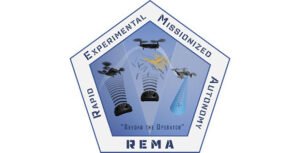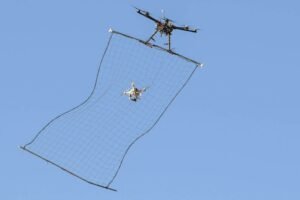The Defense Advanced Research Projects Agency has selected the contractors for their Rapid Experimental Missionized Autonomy (REMA) program, which will practically turn ordinary commercial and military drones into autonomous killing machines.
By joining a program that was announced less than three months ago, the newly awarded partner companies will create a universal system that can equip existing drones with the capability to act autonomously and finish their mission even when the connection to their human operator has been lost.


“REMA is focused on creating autonomous solutions to maximize effectiveness of stock commercial and small military drones on the battlefield,” said Dr. Lael Rudd, REMA program manager when announcing the new awards. “Through creating an autonomy adapter that works with all commercial drones, regardless of manufacturer, and by developing mission-specific autonomy that is constantly refreshed and easy to upload prior to a mission, we aim to give drone operators the advantage in fast-paced combat operations.”
Begun, the Drone Wars Have
Few technological advancements have affected the 21st-century battlefield as much as the drone. Drone strikes were at the heart of the recent attacks on Israel and are so commonplace in the region that the country has employed counter-drone systems like Iron Dome and Iron Beam, the latter of which is a laser designed to combat the increased use of small drones in attacks.
Even the U.S. military has explored numerous techniques to counter the proliferation of low-cost drones. These include directed energy weapons like Thor’s Hammer, drones that attack other drones, and even a huge net that snares drones right out of the sky.


Until recently, even the most sophisticated military-grade drone had relied on its operator to pilot it on its mission. Then, in August last year, an AI-controlled drone became the first to beat a human in a drone race, seemingly ushering in a new era of autonomously controlled drones.
Still, aside from a plan by the U.S. military to unleash swarms of autonomous drones, actually building autonomous drones deployed on military missions has remained in the realm of science fiction. Now, DARPA is looking to change that with REMA.
REMA Could Redefine Drone Warfare
Fortunately, the agency makes sure to note in the press release announcing the newly awarded contracts that REMA will allow drones the autonomy to complete its “predefined” mission. So, at least for now, these specially equipped drones won’t be able to start the drone wars on their own. They will, however, be equipped to combat the countermeasures adversaries may employ to disrupt their communications with their operators.
“As small aerial vehicles play increasingly important military roles on the battlefield, REMA will render ineffective adversaries’ electromagnetic countermeasures intended to disrupt communication links between operator and drone to abort missions and cause crashes,” they explain.
The program has been broken into two distinct phases. The first is the development of a ‘drone-autonomy adapter interface,’ and the second involves the successful completion of the ‘mission-specific autonomy software.’ When completed, the agency says the combined REMA system “will be able to agnostically detect the drone type when connected and apply autonomy to increase the drone’s capability.”
The contracts for the drone-autonomy adapter interface technical area were awarded to Anduril and RTX. The contracts for the mission-specific autonomy software technical area went to Leidos, Northrop Grumman, and SoarTech.
DARPA says these 18-month contracts will be broken into individual “challenges.” The agency also says they expect the program partners “to demonstrate a full working solution to the first challenge” as soon as next month.
Christopher Plain is a Science Fiction and Fantasy novelist and Head Science Writer at The Debrief. Follow and connect with him on X, learn about his books at plainfiction.com, or email him directly at christopher@thedebrief.org.

